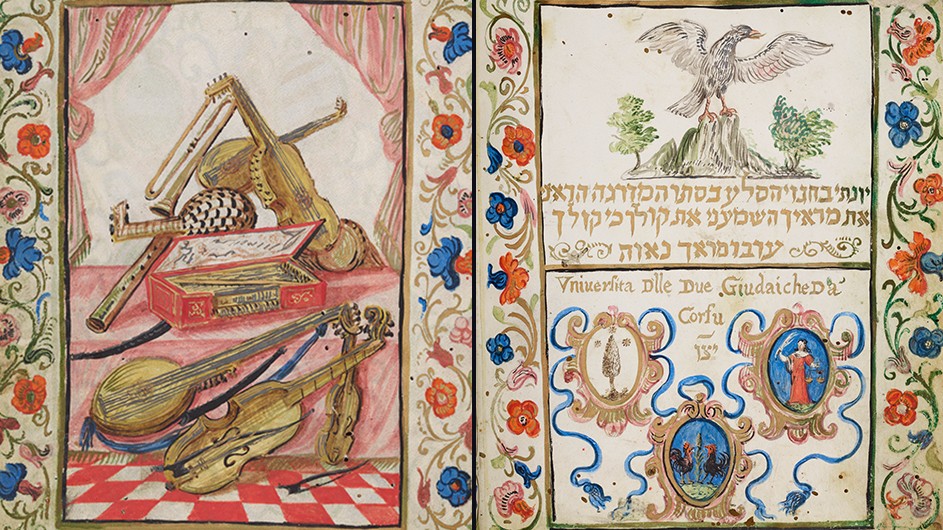Dr. Francesco Spagnolo, curator of the Magnes Collection of Jewish Art and Life and a professor at the University of California, Berkeley, then spoke about the unique musical liturgy of the Jews of Corfu from the 17th through the 20th centuries. Citing two manuscripts acquired with hundreds of others for Columbia by Salo Baron in 1933, Spagnolo described interactions between the older Greek synagogue and the Italian synagogue in Corfu, including a major conflict over the singing of the Shema prayer. He shared audio of the unusual Apulian dialect used by Jews in Corfu, as well as a song praising the virtues of coffee from a Corfiot Passover Seder. A joint exhibition between Columbia and the Jewish Theological Seminary on the Jews of Corfu is tentatively planned for the 2021 fall semester.
Last to present was Dr. J. H. (Yossi) Chajes, a professor at the University of Haifa and director of the Ilanot Project, who spoke about a more recent Libraries acquisition, from 2014: an ilan (tree), so-called for its arboreal, or tree-like, diagrams. Ilanot are vertical parchment rolls of writing that were created for kabbalistic meditation from the 16th century onward. Columbia’s ilan, produced in North Africa or Palestine in the 19thcentury, rolls out to an astonishing 13 feet long. The manuscript is particularly special because it was made as an amulet—not meant to be opened at all, but simply carried in a silver case for the protection of its bearer.
A recording of the event is available on the Norman E. Alexander Lectures page.
Michelle Chesner is the Norman E. Alexander Librarian for Jewish Studies at Columbia.

